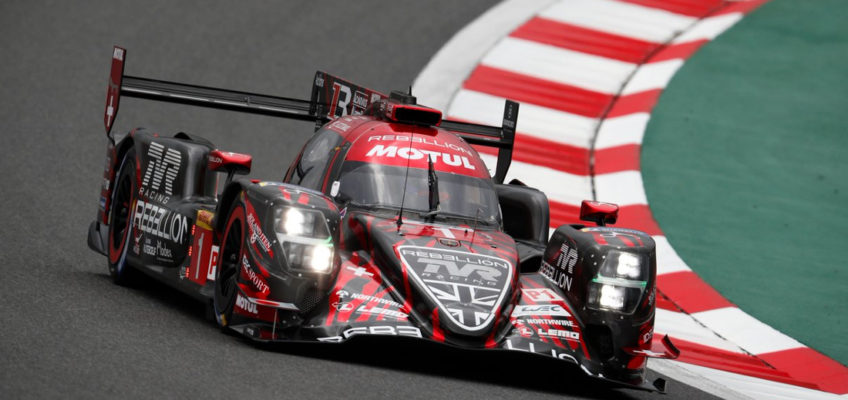The World Endurance Championship’s (WEC) LMP1 Private Teams category will receive a performance boost at the 6 Hours of Shanghai, which will take place on November the 18th.
This boost fundamentally, although not only, consist of an increase in their fuel allowance per lap. In this way,the organisation intends to close the gap that keeps privateer LMP1 cars unable to compete with the ‘Japanese Empire’, that dominates the event.
The change to the Equivalence of Technology (EoT) for the Chinese round of the World Endurance Championship will increase the fuel allowance of privateer vehicles by just below 10% per lap. This will prevent LMP1 vehicles having to lift and coast as they had to do in Japan a couple of weeks ago.
The teams’ demands for a performance boost at the 6 Hours of Shanghai are well justified considering that the best privateer LMP1, the Rebellion Racing number 1, finished four full laps from the Toyota, brand that sealed in 6 Hours of Fuji their third 1-2 of the Super Season 2018/2019.
The numbers
For cars with turbocharged engines such as the Rebellion Racing RB13s and the Dragon Speed BR1, the increase in fuel allowance will be 9.9% per kilometre, 56.5 kg per stint (2.1 kg more) and a maximum of 95.6 megajoules per lap, which represents an increase of 21.9 MJ / lap, since Fuji.
The LMP1s with normally-aspirated engines, on the other hand, such as the CLM P1 / 01 of ByKolles and the BR1 of SMP Racing will have 52.8 kg of fuel per stint and 89.7 MJ / lap in terms of energy allowance. These figures translate into an increase of 21.4 MJ / lap and 3.5 kg (8.5% more) in comparison with the Japanese race.
These measures have been taken by WEC organisers in response to the criticisms which arose after the Japanese race. During the 6 Hours of Fuji, the leaders of the independent LMP1 teams complained that they had to lift and cost (a fuel saving technique that consists on lifting the foot off the accelerator and let the vehicle roll by inertia to reach the curves) which, greatly hampered their performance (it made them slower).
In relation to this, Gaetan Jego, Technical Director of SMP Racing, commented: “Clearly what happened in Fuji was the result of a miscalculation and we are now back to the situation we were in at Silverstone.”
“We were affected more than the normally-aspirated cars at Fuji,” said Jego. “The FIA and ACO are still learning how to make the EoT work and it is good that a correction has been made.” – he concluded.
This situation reminds us of other common controversies that exist in F1, where drivers must manage the fuel consumption of their cars. Under these circumstances, the privateers find it impossible to compete against the LMP1s of Toyota Gazoo Racing.
Toyota: The Japanese team that rules the WEC
The Japanese arrive at the Shanghai International Circuit, as leaders of the standings. The Toyota TS050 Hybrid cars have almost completely dominated the Championship, winning three of the four races (Spa, Le Mans, Silverstone and Fuji) disputed so far.
The British stage was the only one that slipped off their fingers after having both cars disqualified post-race due to issues surrounding deflection of the front part of the mandatory skid block.
The Toyota number 8 of Fernando Alonso, Sebastien Buemi and Kazuki Nakajima has a total of 84 points, 13 more than their team-mates onboard #7 José María López, Kamui Kobayashi and Mike Conway. In third place, with 63 points is the Rebellion Racing 3 of Gustavo Menezes, Mathias Beche and Thomas Laurent, winners of the 6 Hours of Silverstone.
Main image: Rebellion Racing.





Leave a Reply